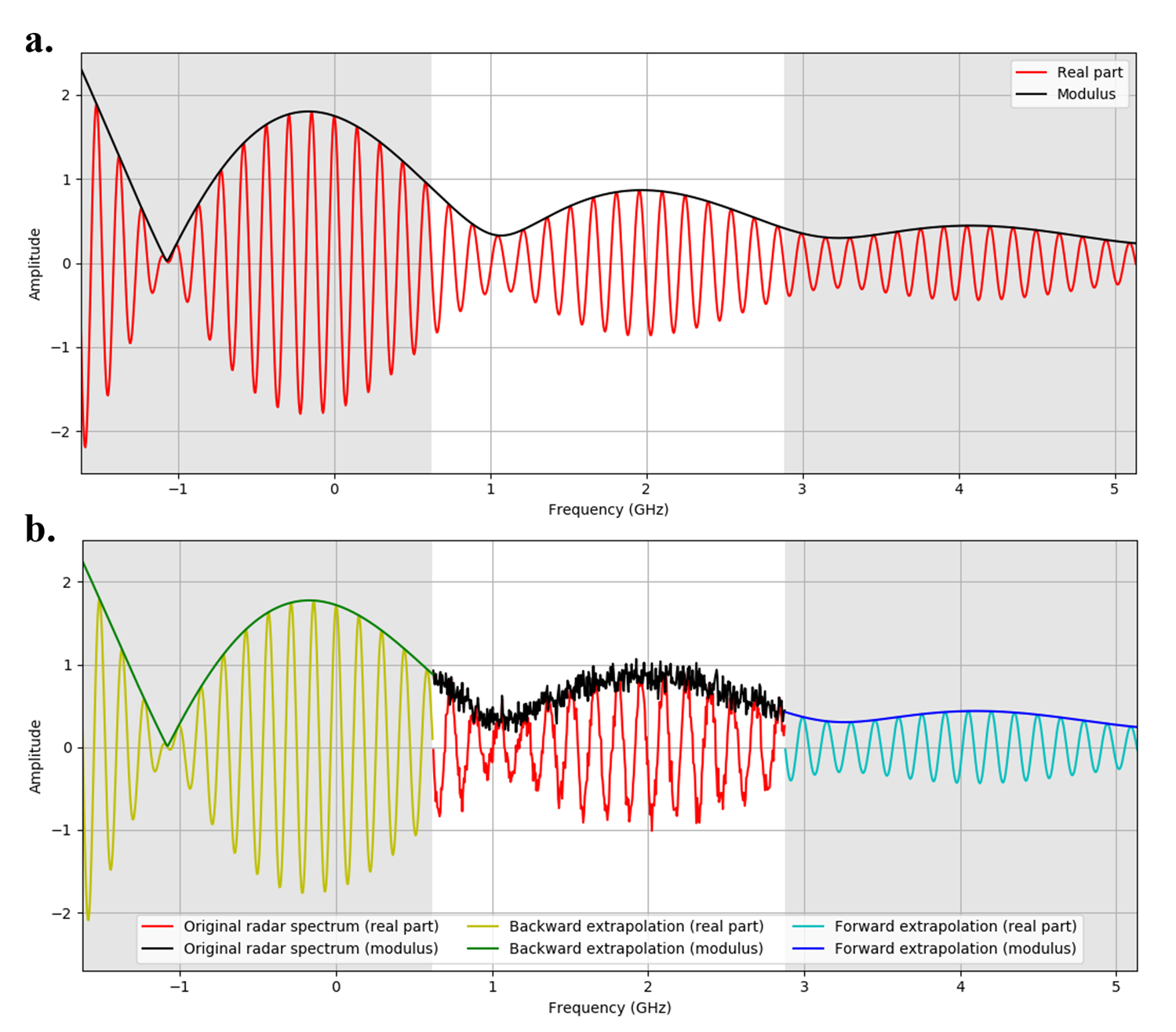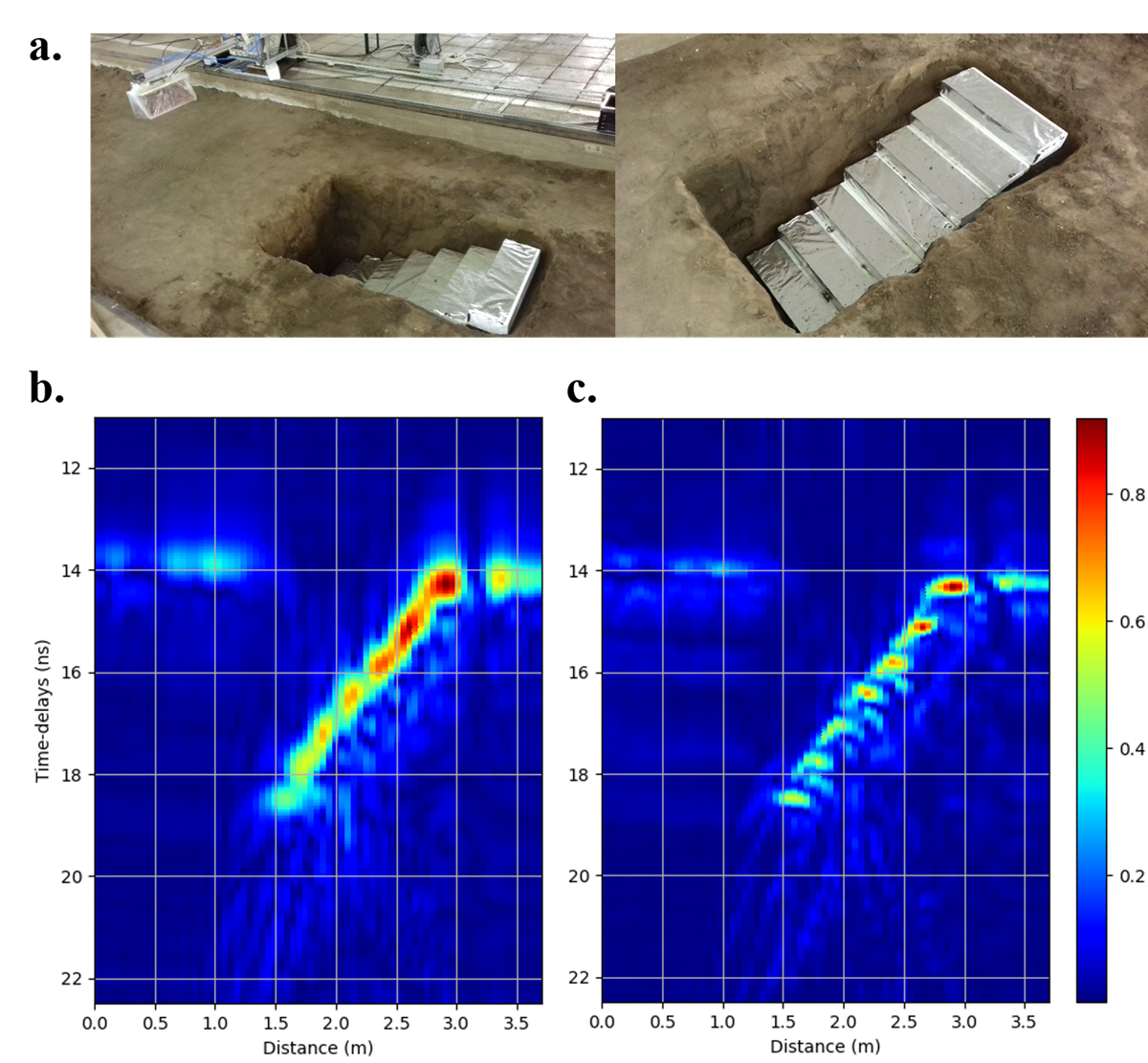PyBWE: Open-Source Python tools for Super-Resolution applied to Planetary Radar Soundings
- LATMOS/IPSL, UVSQ Université Paris-Saclay - Sorbonne Université - CNRS, Guyancourt, France (nicolas.oudart@latmos.ipsl.fr)
Range resolution is one of the key performance metrics for a radar instrument. It is driven by the time resolution of its soundings, and the electromagnetic properties of the sounded material. This resolution is set by design, as it is limited by the bandwidth of the instrument: the larger the bandwidth, the better the resolution. Modern radar modulation techniques require a spectral estimation method to obtain a time-domain signal for human-interpretation. The Fast Fourier Transform is generally selected for its robustness and efficiency. However, the time resolution of this method is limited by the inverse of the bandwidth, and the necessary windowing for side-lobes reduction. For this reason, « super-resolution » techniques have been introduced in the 1980s, based on parametric signal models [6].
The « Bandwidth Extrapolation » (BWE) techniques [2] fit a parametric model to a measured radar signal’s spectrum. This spectrum is then extrapolated forward and backward to increase the bandwidth, and the spectrum is eventually Fourier transformed to obtain a sounding in time-domain. The resolution enhancement compared to the FFT (without windowing) is equal to the extrapolation factor. This extrapolation is possible because a measured radar spectrum can be modelled by a sum of complex sine-waves with different amplitudes, frequencies and phases. Each of the complex sine-waves corresponds to an echo in time-domain. In practical cases, this deterministic signal is corrupted by various sources of noise, distorsions, and can be dampened by losses in the sounded material. Hence a limitation of the extrapolation by a factor of 3 [8].
Invented for Earth radars, this technique has been extensively applied to planetary radar sounders in the last decade, allowing futher insights on the sub-surface structure and composition of the Moon, Mars and Titan. Results of the BWE applied to planetary radar studies include: (1) the first bathymetry of a Titan sea (Cassini mission [7]), (2) the stratigraphic analysis of the Martian polar ice sheet (Mars Express [5] and MRO missions [12]), (3) the estimation of the Martian shallow sub-surface attenuations (Mars 2020 mission [4]), (4) the preparation of future Martian drilling operations (ExoMars mission [9]).
We released this year the first open-source BWE software, as a Python library named « PyBWE » [10]. PyBWE is accessible on PyPI, and the source code on GitHub. It is divided into 3 packages, corresponding to 3 different signal models for bandwidth extrapolation:
- PyBWE: the « classic » BWE technique [2], currently the only one applied to planetary radar data, with an AR model determined using the Burg algorithm.
- PyPBWE: the « Polarimetric BWE » technique [13], adapted to radars with multiple polarimetric configurations, with a multi-channel AR model determined using a multi-channel Burg algorithm.
- PySSBWE: the « State-Space BWE » technique [11], more robust to noise and signal attenuations, with an ARMA model determined using a State-Space modelling approach.
We intend this library to be useful for both radar experts and non-radar experts within the planetary science community. For this reason, each package proposes integrated solutions, as well as individual functions for modelling and extrapolation. Are included in PyBWE: an exhaustive documentation, example scripts and automated performance tests.
Results from one of the examples provided with PyBWE for the PySSBWE package is presented in frequency-domain in Fig. 1, as an illustration of the capability of the method to reconstruct a radar spectrum in the presence of attenuations and a high level of white noise.

Fig. 1 Example of application of the PySSBWE package on a synthetic radar spectrum, generated for 2 complex sinusoids of amplitudes 1 and 0.75, with exponential frequency domain decays 0.25 and 0.5 GHz-1, corresponding to targets at 1 and 1.07 m from the antennas. The signal is corrupted by a white Gaussian noise of std 0.1. The original bandwidth is 0.5-3 GHz, corresponding to the working frequencies of the WISDOM radar (ExoMars mission [1]) (a) Expected spectrum after extrapolation in the absence of noise, for comparison (b) Spectrum extrapolated forward and backward with PySSBWE
Applications of PyBWE to the WISDOM (ExoMars mission), RIMFAX (Mars 2020 mission) and RoSPR (Tianwen-1 mission) radars will be proposed to illustrate this work. See Fig. 2 for an example on an experimental WISDOM radargram [1]. With the selection of radar sounders for the exploration of Venus (EnVision mission) and Jupiter’s icy moons (JUICE and Europa Clipper missions), we expect PyBWE to have many applications in the future. In addition, we plan to maintain and update the library, and the recent developments in super-resolution techniques [3] could be integrated as new packages.

Fig. 2 Application of PyBWE to an experimental WISDOM (ExoMars mission [1]) radargram acquired during a measurement campaign on Earth (a) Experimental set-up with a metallic staircase below a flight model of the WISDOM instrument, each step being separated by a 10 cm height (b) Radagram obtained after a classic IFFT and Hamming windowing, where the different steps cannot clearly be separated (c) Radargram obtained after BWE, where the different steps are now resolved
References:
[1] Ciarletti et al., 2017, Astrobiology, https://doi.org/10.1089/ast.2016.1532
[2] Cuomo, 1992, Lincoln Laboratory report
[3] Donini et al., 2024, IEEE Transactions on Geoscience and Remote Sensing, https://doi.org/10.1109/TGRS.2024.3378576
[4] Eide et al., 2022, Geophysical Research Letters, https://doi.org/10.1029/2022gl101429
[5] Gambacorta et al., 2022, IEEE Transactions on Geoscience and Remote Sensing, https://doi.org/10.1109/tgrs.2022.3216893
[6] Kay & Marple, 1981, Proceedings of the IEEE https://doi.org/10.1109/proc.1981.12184
[7] Mastrogiuseppe et al., 2014, The bathymetry of a titan sea, Geophysical Research Letters, https://doi.org/10.1002/2013gl058618
[8] Moore et al., 1997, Lincoln Laboratory Journal
[9] Oudart et al., 2021, Planetary & Space Science, https://doi.org/10.1016/j.pss.2021.105173
[10] Oudart et al., 2024 (in review), Journal of Open Source Software
[11] Piou, 1999, Lincoln Laboratory report
[12] Raguso et al., 2023, Icarus, https://doi.org/10.1016/j.icarus.2023.115803
[13] Suwa & Iwamoto, 2007, IEEE Transactions on Geoscience and Remote Sensing, https://doi.org/10.1109/tgrs.2006.885406
How to cite: Oudart, N., Ciarletti, V., Le Gall, A., and Brighi, E.: PyBWE: Open-Source Python tools for Super-Resolution applied to Planetary Radar Soundings, Europlanet Science Congress 2024, Berlin, Germany, 8–13 Sep 2024, EPSC2024-170, https://doi.org/10.5194/epsc2024-170, 2024.